Digital circuits are the backbone of modern electronic devices, and the fundamental building blocks of these circuits are logic gates. These gates are used to perform Boolean operations and can be combined to create more complex circuits. In order to build more advanced circuits, it is essential to understand the functions of basic logic gates such as the D-latch. A D-latch is a type of flip-flop, which is a circuit that can store a single bit of data. The D-latch can be thought of as a simple memory cell that can store a single bit of information [1].
In the realm of digital logic, where the intricacies of electronic circuits and information processing collide, the D-Latch stands as a fundamental building block. As an essential component within computer architecture and digital systems design, the D-Latch plays a pivotal role in storing and transferring binary data. Its ability to latch, or hold, a data input and reflect it as an output until a control signal is received makes it a cornerstone of sequential logic circuits.
In this article, we embark on a journey to explore the inner workings and applications of the D-Latch. We delve into the intricate details of its structure, uncover its truth table and characteristic equation, and provide insights into its practical implementation. Furthermore, we examine how the D-Latch integrates into larger digital systems, such as flip-flops and registers, and discuss the role it plays in the world of sequential logic.
By the end of this article, readers will not only gain a comprehensive understanding of what a D-Latch is but also appreciate its importance in the broader context of digital logic. With this newfound knowledge, individuals will be equipped to tackle more complex digital circuit design challenges and appreciate the inner workings of the devices that power our modern technological landscape.
Different Types of Latches:
SR-Latch
It has two inputs, S and R, and two outputs, Q and Q’, which are the inverted outputs of each other. When S is high and R is low, the latch is set, and the output Q is high, while Q’ is low. Conversely, when S is low and R is high, the latch is reset, and the output Q is low, while Q’ is high. If both inputs are low or both high, the output remains in its previous state. SR-Latches are used for memory storage, as well as control and synchronization circuits.
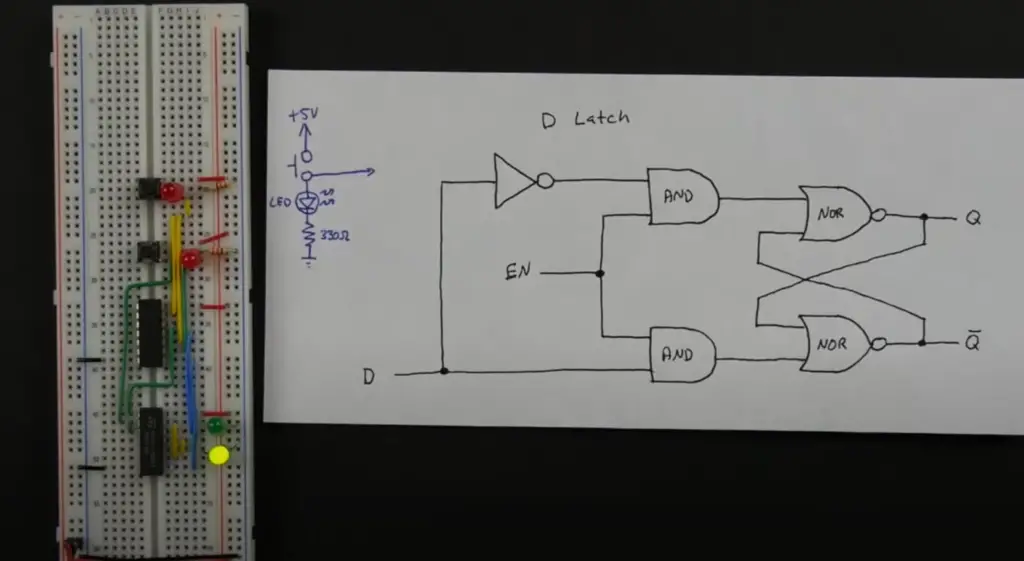
Gated SR-Latch
The Gated SR-Latch is a variation of the SR-Latch that adds control inputs. In addition to the S and R inputs, it has two control inputs, C (Clock) and EN (Enable). When EN is low, the outputs are in the hold state, meaning that they remember their previous state. When EN is high and C is low, the latch is either set or reset, depending on the values of S and R. When C is high, the latch is temporarily disabled and the outputs are in the hold state again. Gated SR-Latches are used in memory circuits, as well as control and synchronization circuits.
D-Latch
The D-Latch is a circuit that can store one bit of data and is similar to the SR-Latch but with only one input. It has two outputs, Q and Q’, which are the inverted outputs of each other. The input, D, stands for “Data”, and when the EN (Enable) input is high, the D-Latch stores the value of D as its output Q. When EN is low, the output remains the same, regardless of the value of D. The D-Latch is used for data storage, as well as for control and synchronization circuits. It is more reliable than the SR-Latch, as it avoids the problem of indeterminate states that can occur when both inputs of the SR-Latch are high or low [2].
Gated D-Latch
The Gated D-Latch is a variation of the D-Latch that adds control inputs. In addition to the D input, it has two control inputs, C (Clock) and EN (Enable). When C is low, the outputs are in the hold state, meaning that they remember their previous state. When C is high and EN is high, the input D is stored as the output Q. When EN is low, the output Q remains the same, regardless of the input D. Gated D-Latches are used in memory circuits, as well as control and synchronization circuits. They are commonly used in microprocessors and in other digital devices that require reliable data storage.
JK-Latch
The JK-Latch is a multi-input latch that can store one bit of data. It has two inputs, J (Set) and K (Reset), and two outputs, Q and Q’. When J is high and K is low, the output Q is set, and Q’ is reset. Conversely, when K is high and J is low, the output Q is reset, and Q’ is set. If both inputs are high or low, the outputs toggle and switch their state. The JK-Latch is commonly used for data storage, as well as control and synchronization circuits.
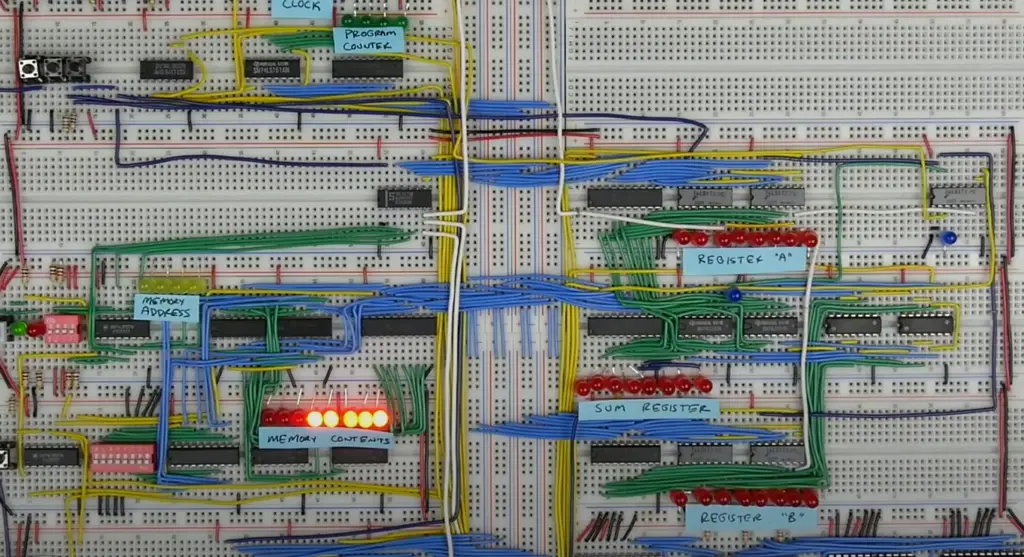
T-Latch
The T-Latch is a type of latch that can store one bit of data. It has one input, T (Toggle), and two outputs, Q and Q’. When T is low, the output remains in its previous state. When T is high, the output toggles, meaning that if it was high, it becomes low, and vice versa. The T-Latch is commonly used in control and synchronization circuits, as well as in digital clocks and other timing applications.
What’s the Difference Between Latch and Flip-Flop?
While they both function to store a single bit of data, there are key differences between them. A latch is a level-sensitive circuit whose output changes according to the input when the clock signal is high. In contrast, a flip-flop is an edge-triggered circuit whose output changes at the rising or falling edge of the clock signal.
Latches are faster and simpler than flip-flops, but they are not as reliable and can potentially suffer from glitches. Flip-flops, on the other hand, are more reliable and have a strong synchronization capability due to the use of a clock signal, but they are relatively complex and have higher power consumption.

How Does The D-Latch Work?
The D-latch is a level-triggered device, which means that it operates based on the input levels that remain stable for a certain period of time. It is made up of two NAND gates connected in a feedback loop, which allows it to function as a latch, meaning that the output can be set or “latched” based on the input.
The first NAND gate is connected to the input and its output is connected to the second input of the second NAND gate, while the output of the second NAND gate is connected back to the first input of the first NAND gate.
The D-latch has two inputs, D and EN (Enable), and two outputs, Q and Q’. Input D is the data input, while EN is the enabled input. When EN is high, the output of the D-latch can be changed based on the value of D. When EN is low, the output remains the same, regardless of the value of the input D. The D-latch is commonly used in electronic devices for storing and manipulating data, and its functionality has been utilized in many different applications, such as digital counters, shift registers, and data storage systems [3].

Application Of D-Latches
The application of D-Latches spans across various domains, from computer architecture to digital electronics. Its versatile nature and fundamental functionality makes it an indispensable component in designing complex digital systems.
Let’s explore some key applications of D-Latches:
- Storage Elements: D-Latches are widely used as basic storage element in sequential logic circuits. They can temporarily store a binary value until a control signal triggers an update. In this context, D-Latches serve as essential building blocks for constructing more advanced memory elements like registers, counters, and shift registers;
- Data Synchronization: In digital systems, it is crucial to synchronize data signals from different sources. D-Latches can be employed as synchronization elements to align the timing of data inputs. By using D-Latches in combination with clock signals, data can be reliably transferred between different parts of a system, ensuring accurate and synchronized data processing;
- Control Signal Manipulation: D-Latches are often utilized to manipulate control signals in digital circuits. By using the control input, the behavior of the D-Latch can be controlled, allowing for the enabling or disabling of specific operations. This feature is crucial in designing complex systems that require precise control over various functional blocks;
- Pulse Shaping: D-Latches can be employed for pulse shaping applications. By utilizing the latch’s ability to temporarily hold data until a control signal is received, it is possible to shape input pulses into desired output waveforms. This application is particularly useful in areas such as signal processing and communication systems;
- State Machines: D-Latches are integral to the implementation of state machines. State machines are fundamental building blocks used to model and control sequential behavior in digital systems. D-Latches play a vital role in storing and transitioning between different states based on input conditions, allowing for the creation of complex state-based systems;
- Pipelining: D-Latches are utilized in pipelining, a technique used to enhance the performance and efficiency of processors and digital systems. By incorporating D-Latches at strategic points in the pipeline, the flow of data between different stages can be regulated, improving overall system throughput [4];
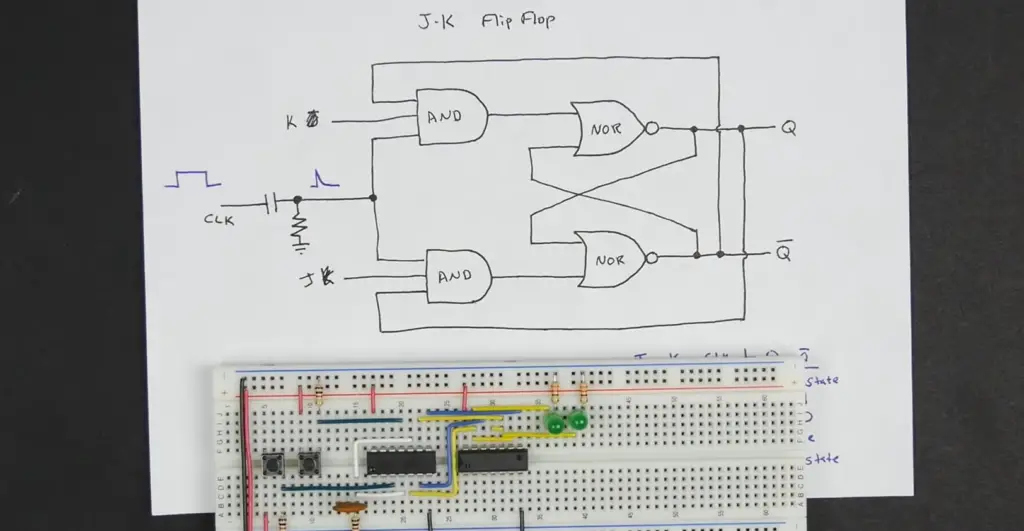
Edge Triggering vs. Level Clocking
Edge Triggering
In edge triggering, a signal is detected when it changes from one state to another, either from a low state to a high state or from a high state to a low state. The circuit then captures the state of the signal and uses it to trigger a response. Edge-triggered circuits are commonly used in digital systems, such as microprocessors, graphics cards, and communication devices. They offer several advantages, such as higher performance, better noise immunity, and easier synchronization.
One of the main advantages of edge triggering is its speed. Since the circuit only captures the state of the signal when it changes, it can respond quickly to changes in the input signal. Edge triggering also offers better noise immunity, as it ignores any noise that may occur during the steady state of the signal. This is because the circuit only responds to the edge, which is a sharp and defined transition, and not to the noise that may occur during the steady state.
Another advantage of edge triggering is its easier synchronization. Since the circuit only responds to the edge, it can be easily synchronized with other circuits that use the same clock signal. This is because the clock signal is periodic and has a well-defined edge, which can be used as a trigger for the circuit.
Level Clocking
In a level clock, a signal is detected when it remains at a certain level for a period of time. The circuit then captures the level of the signal and uses it to trigger a response. Level-clocked circuits are commonly used in digital systems, such as control systems, timing circuits, and power management systems. They offer several advantages, such as lower power consumption, simpler design, and easier debugging.
One of the main advantages of level clocking is its lower power consumption. Since the circuit does not need to respond to every change in the input signal, it can consume less power than an edge-triggered circuit. This is because the circuit only responds to the level of the signal, which can remain steady for several clock cycles, reducing the number of transitions and saving power.
Another advantage of level clocking is its simpler design. Since the circuit only needs to detect the level of the signal, it requires fewer components than an edge-triggered circuit. This simplifies the design process and reduces the cost of the circuit.
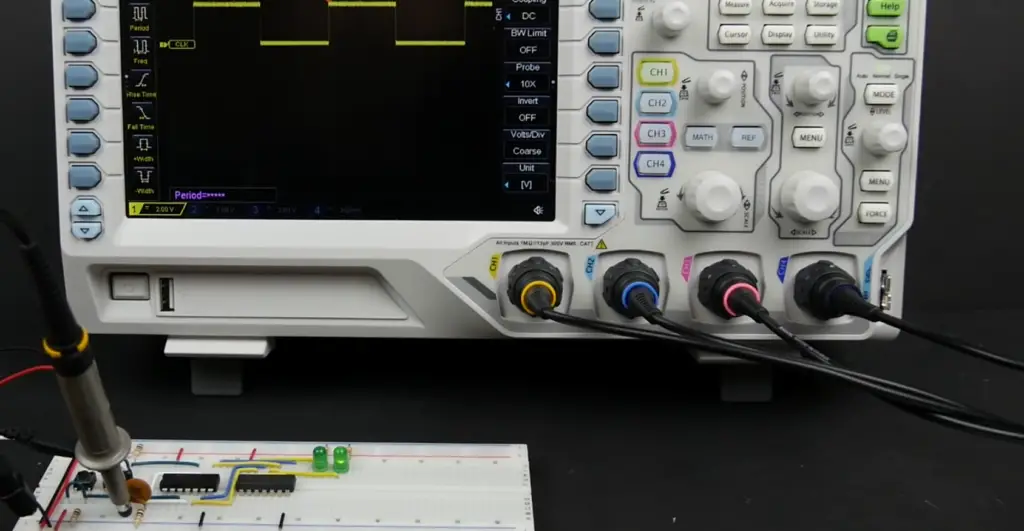
Finally, level clocking offers easier debugging. Since the circuit responds to the level of the signal, it is easier to observe and debug the circuit using a logic analyzer or an oscilloscope. This is because the signal levels can be easily monitored and analyzed, allowing for easier identification of any errors or malfunctions in the circuit [5].
SR-Latch and D-Latches Comparison:
SR-Latch
The SR-Latch is a simple digital circuit that contains two inputs, Set (S) and Reset (R). It also has two outputs, Q and not-Q, which represent the inverse of the Q output. The SR-latch is used as a simple memory circuit, where S is used to store the value 1, and R is used to store a value 0. The output Q retains its value until the Set or Reset input changes. The SR-Latch circuit can be constructed using NOR or NAND gates. The circuit uses the principles of feedback, where the output of the gate is fed back to one of its inputs, creating a memory effect.
D-Latch
The D-Latch, on the other hand, is a much simpler circuit with only one input, D, and one output, Q. When the enable signal is high, the output of the D-latch follows the value of the input D. When the enable signal is low, the output of the D-latch maintains its previous value. The output state of a D-latch can be represented by a truth table, where the output Q is a function of the input D and the enable signal E.
The D-latch is very common due to its simplicity, lower power consumption, and smaller number of components. It can also perform sequential logic functions based on D input. However, it is more prone to glitches when the enable signal is unstable. Also, it requires a stable and clean input signal.
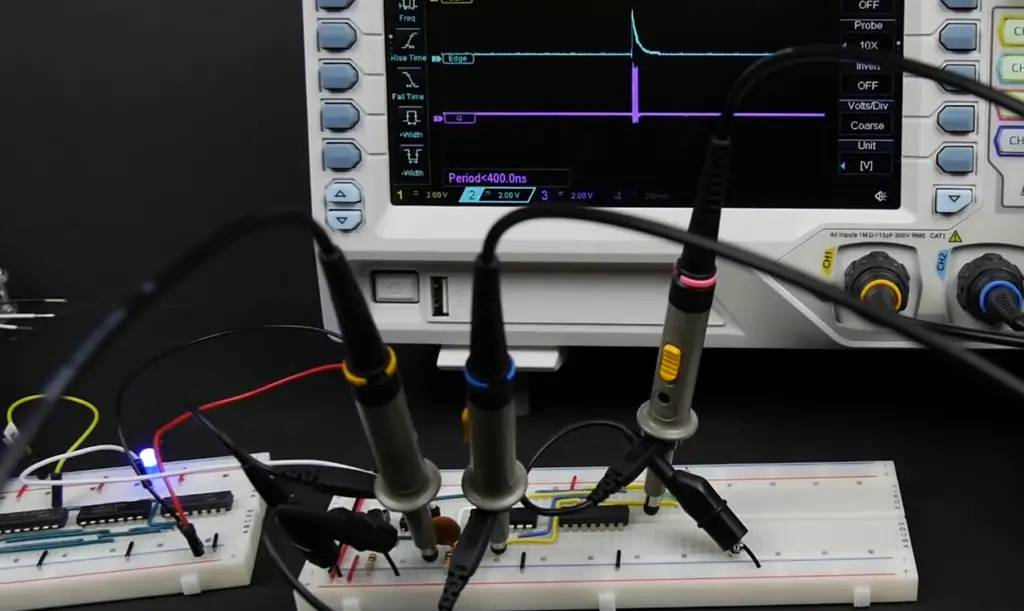
Memory Circuits:
- Inputs and Outputs: SR-latches have 2 inputs (set and reset) and 2 outputs (Q and Q’). In comparison, D-latches have only one input (data or D) and one output (Q). This means that SR-latches are capable of storing multiple bits of data, while D-latches are only able to store a single bit;
- Functionality: SR-latches are level-sensitive and can maintain their state (either ‘set’ or ‘reset’) as long as the inputs are kept at a steady state. In comparison, D-latches are edge-sensitive, which means that the output will only change when the edge of the clock signal is detected. This means that the output of the D-latch is only dependent upon one input, whereas the output of the SR-latch is dependent on both inputs;
- Speed: Because D-latches have only one input, and are edge-triggered, they are often considered to be faster than SR-latches. This is because D-latches can respond to changes in the input signal much more quickly than SR-latches, which need to evaluate both inputs at each clock cycle;
- Power Consumption: D-latches are more power-efficient than SR-latches since they require fewer components. This makes them a better choice for battery-powered devices or low-power applications;
- Stability: SR-latches can be prone to glitches when both inputs are high, causing the circuit to enter an unstable ‘forbidden’ state. In comparison, D-latches do not suffer from this problem and are more stable overall [6];
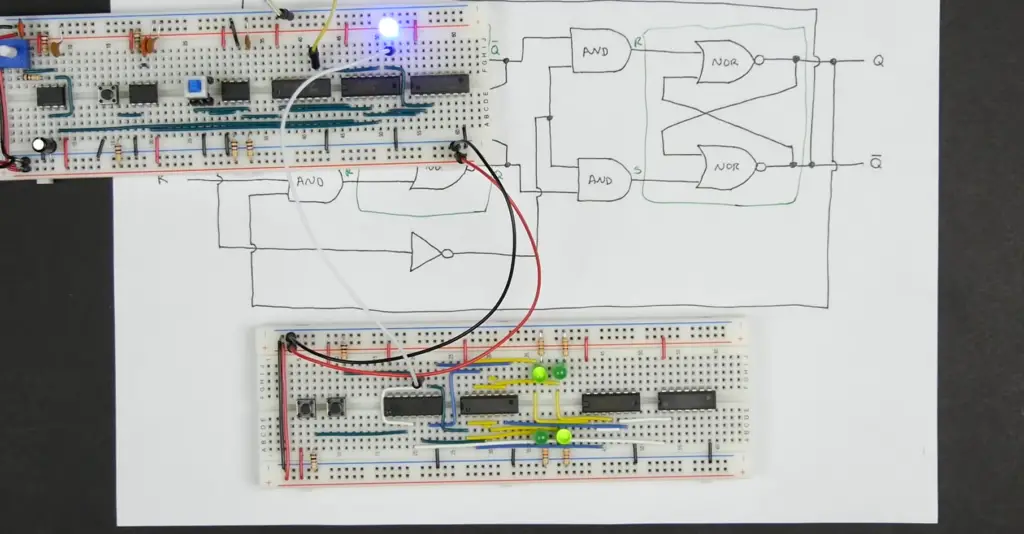
FAQ
1. What is a positive D-latch?
A positive-edge-triggered D-latch, also known as a rising-edge-triggered D-latch, differs from a basic D-latch in that its state is only updated on the rising edge of an external clock signal, in addition to the D input. Positive D-latches are typically used in synchronous sequential circuits, where they help to synchronize input signals and prevent metastability issues. The clock signal is used as a synchronization signal to minimize the delay between the input signals and the output. This type of latch is used in various applications, such as flip-flops, memory registers, and shift registers.
2. What is CMOS D-latch?
It is composed of four CMOS transistors and two inverters, and it works by controlling the transmission gate based on the state of the D input signal. The CMOS D-latch is designed to have low power consumption and high integration density, making it suitable for use in portable devices and other low-power applications. The circuit can be designed with a variety of threshold voltages and transistor sizing, to optimize its performance.
3. Is D-latch a combination circuit?
A D-latch is a type of combination circuit, which is also known as a combinational circuit. Unlike sequential circuits that have memory elements, such as flip-flops and registers, a combinational circuit produces an output that is solely dependent on its current input values. The internal logic of a D-latch is composed of two cross-coupled logic gates that form a circuit that is capable of storing one bit of information.
4. Why do we need latches?
Latches are essential components in digital circuits that are used to store and control the flow of digital signals. They are used in scenarios where it is necessary to hold a particular state until a new state is provided. Latches are also useful in applications where a clock signal is not needed, or where the circuit switches between different functionalities over time. They can also be used to stabilize signals and reduce noise, and in combination with other digital components, latches can form complex digital systems.
5. Why is D-latch known as a transparent latch?
A D-latch is called a transparent latch because of its transparency property. When the enable input is high, the D-latch is in the transparent state, which means that its output follows the input D. In this state, the D-latch acts like a straight wire, passing digital data from the input to the output [8].
When the enable input is low, however, the D-latch becomes opaque, which means that its output holds the previous value and ignores any changes that occur at the input. Hence, this property of D-latches allows them to represent the input signal more accurately.
6. What is the main advantage of D latch compared to RS latch?
The main advantage of a D-latch over an RS-latch (Reset-Set latch) is that it eliminates the possibility of race conditions between the two inputs. In an RS-latch, if both the Set and Reset inputs are activated simultaneously, it can result in an undefined output state.
A D-latch eliminates this problem by introducing a single input signal (Signal D), which sets the output high or low depending on its value at the rising edge of the clock. Hence, the D-latch ensures greater stability and reliability in controlling digital signals.
7. Are flip-flops slower than latches?
Flip-flops and latches are both used in digital circuits to store and manipulate binary information. However, flip-flops tend to be faster than latches because they are synchronized to a clock signal. Flip-flops have a clock input that synchronizes the internal state changes to the rising or falling edge of the clock signal, whereas latches do not require a clock signal and can change their output state asynchronously.
However, flip-flops also require more components and power when compared to latches, making them more expensive and less power-efficient.
8. How long should you latch?
The duration of a latch depends on the specific digital circuit and its desired functionality. Latching too quickly might result in mistakes due to noise or instability while latching too slowly can cause information loss. The duration should be long enough to ensure a stable output, and short enough to prevent significant delays or data loss. Typically, digital circuits implement latching with the rising edge or falling edge of a clock signal to ensure accurate and efficient data storage and transfer.
9. How do latches work?
Latches work by using a feedback mechanism to store digital data. They consist of combinational logic gates that are connected in a feedback loop, which allows them to store and control the flow of digital signals.
A latch has two stable states: transparent and opaque. In the transparent state, the output follows the input, while in the opaque state, the output retains its previous state and ignores changes in the input signal. Latches can be triggered by input signals such as the clock or enable signals, and their output state can be used to drive other digital components in a circuit.
10. What is a tubular latch?
A tubular latch is a type of mechanical latch commonly used in door handles. It consists of a metal tube that contains a spring and a latch bolt. The bolt extends from the tube and can be retracted by turning the handle. When the door is closed and the handle is released, the bolt extends from the tube and locks the door. Tubular latches are popular because they are easy to install and operate, and offer a convenient and secure way to close doors.
11. What is the output of the D-latch?
The output of a D-latch depends on the values of its input and enable signals. When the enable signal is high, the output of the D-latch follows the value of the input D. When the enable signal is low, the output of the D-latch maintains its previous value. The output state of a D-latch can be represented by a truth table, where the output Q is a function of the input D and the enable signal E.
12. What are the 3 types of latches?
There are different types of latches used in digital circuits. Some of the most common types of latches are:
- SR latch: The SR latch has two inputs, S (Set) and R (Reset), and two outputs, Q and Q’. It stores one bit of data and can be used as a basic memory element;
- D latch: The D-latch stores one bit of data with a single input signal D, which controls the state of the output;
- JK latch: The JK latch is similar to the SR latch but has an additional input, J-K, which allows it to function as a toggle switch [9];
13. Does a poor latch hurt?
A poorly designed latch can lead to a variety of problems in digital circuits. It can cause instability, a failure to latch, or delayed latching, leading to incorrect data transfer or processing.
14. What is the difference between a D-latch and a gated D-latch?
A D-latch and a gated D-latch are two types of latches used in digital circuits. The main difference between the two is that the gated D-latch has an additional input signal, the enable signal, which controls when the input signal is allowed to affect the output state [10].
In a D-latch, the output state changes whenever the input signal changes, regardless of the state of the enabled signal. In contrast, a gated D-latch only transfers data from the input to the output when the enable signal is high. When the enable signal is low, the latch maintains its previous output state, regardless of the input signal. This can help to prevent glitches or errors in the output state due to brief changes in the input signal when the enable signal is not active. Gated D-latches are commonly used as part of more complex digital circuits where precise control over data transfer and timing is important.
Useful Video: D latch
References
- https://cse14-iiith.vlabs.ac.in/exp/d-latch-and-d-flip-flop
- https://www.allaboutcircuits.com/textbook/digital/chpt-10/d-latch/
- https://vlab.amrita.edu/?sub=3&brch=66&sim=519&cnt=833
- https://www.build-electronic-circuits.com/d-latch/
- https://www.electrical4u.com/d-flip-flop-or-d-latch/
- https://electronics-course.com/d-latch
- https://www.realdigital.org/doc/8ee36c2a5221c0c118aa3d363c4f1df4
- https://www.tutorialspoint.com/digital_circuits/digital_circuits_latches.htm
- https://www.elprocus.com/basics-of-latches-in-digital-electronics/
- http://doctord.dyndns.org/courses/bei/GK415/digital/d_nand_latch.html





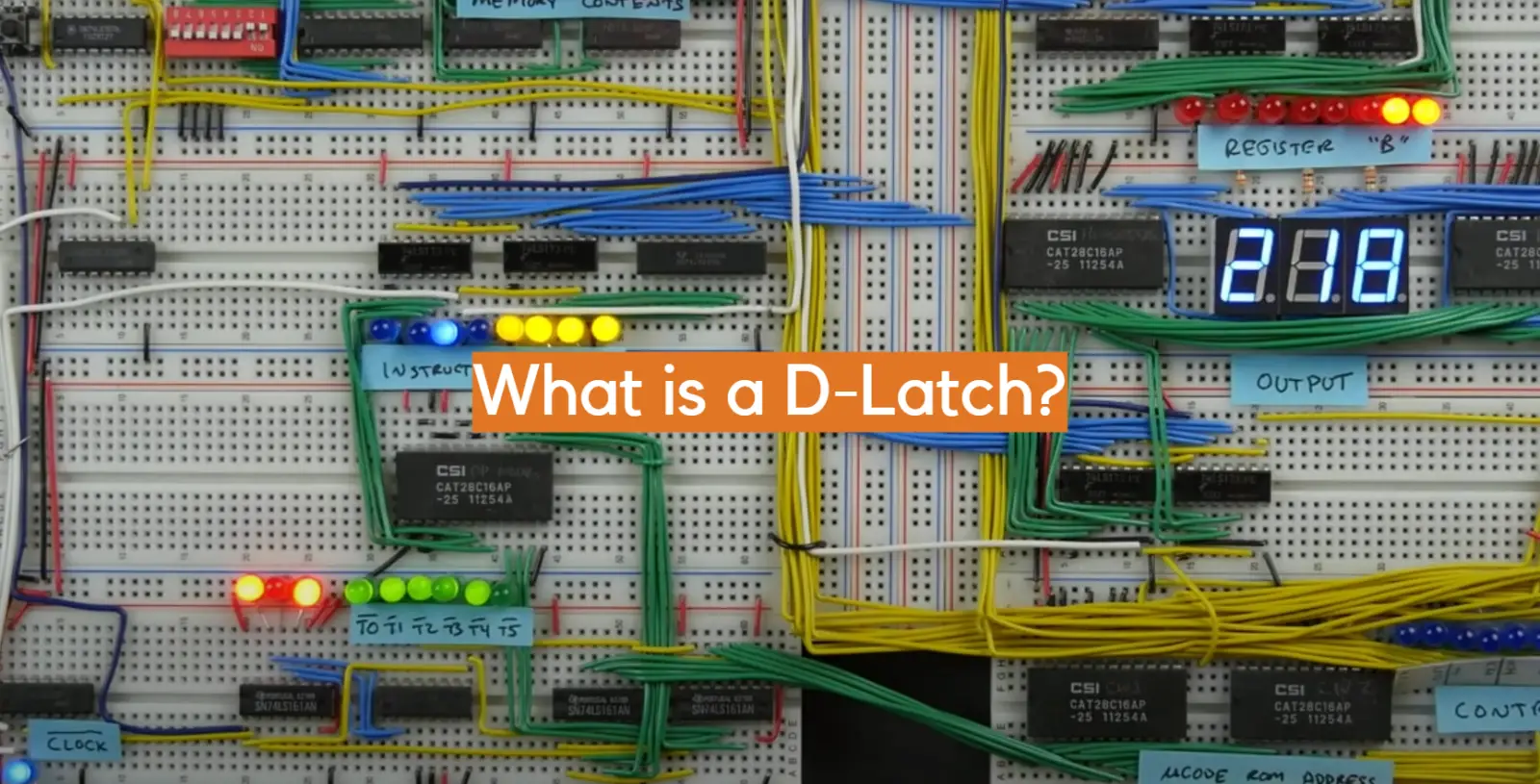




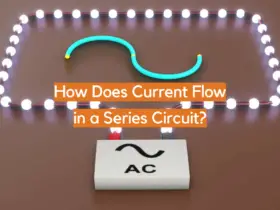



Leave a Reply